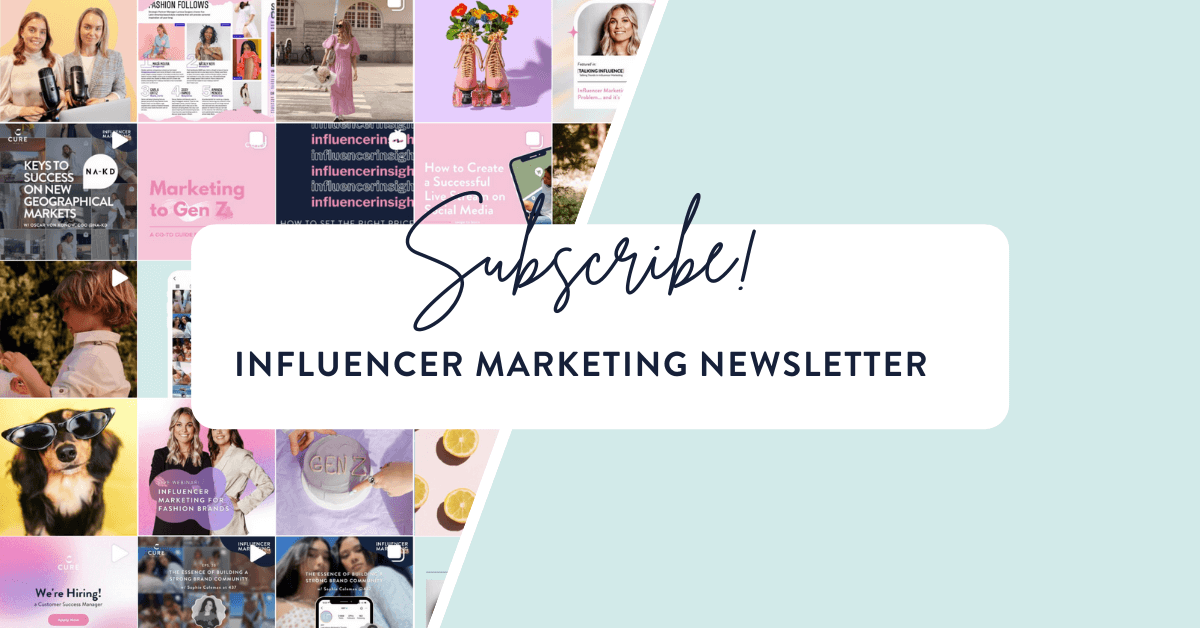In a marketplace in which consumer choice is virtually limitless and brand loyalty is fickle, building a relationship with your consumers is essential – which is tricky when consumers seemingly grow more skeptical of marketing messages every year.
To contend with this, more and more brands have looked to influencer marketing to act as the middleman between them and their audience. Like a mutual friend, influencers offer brands and their marketing teams the social proof they need to get their messages across. They vouch for them. And with consumers statistically more inclined to trust influencers than brands, this endorsement can be invaluable.
However, it is not as simple as ‘doing’ influencer marketing and then waiting for the sales to roll in. The way you approach the channel can have a significant impact on the level of success you enjoy, from the influencers you use to the content you deploy.
But before we get bogged down in the details, you need to decide how you’ll be factoring influencers into your marketing calendar. So in this article we’re going to look at two of the most foundational ways brands tackle the channel: campaign-based and always-on.
Short-term tactics
For as long as influencers have been a viable marketing channel, brands have generally opted for a campaign-based or one-off approach to their activations. Influencer content would consist of either a single ad or short-term, periodic campaigns generally geared towards specific promotions or consumer periods – things like new product launches or the festive season.
The reasons behind these approaches’ popularity have largely been rooted in their perceived simplicity; with clear start and end dates, resource requirements are easy to define and outcomes supposedly easier to trace.
And for a long time, influencer activations built with this short-term approach were absolutely effective. In a new channel with wide-eyed audiences and followers still enamoured with all things influencer, it was all too easy for brands to put out an ad once a quarter and then call it a day, basking in the click-throughs and increased brand awareness that they brought, however ephemeral.
However, as social media has become more and more saturated and consumer cynicism has increased, many brands have found it harder to cut through the noise using a single influencer ad or one month-long campaign. While this approach is still regularly employed, brands who do rely on them will likely find their results increasingly underwhelming, potentially putting them off of future investments in the channel and therefore mistakenly closing a valuable (or even essential) revenue stream.
The always-on strategy
Now the always-on approach, on the other hand, does what it says on the tin. It relies on prolonged, sustained engagement with the channel and through it, your target audience. By adopting this strategy brands are committing to the long-haul, signing up for months if not years of influencer activations and deploying them even in traditionally low seasons or outside of product cycles. Now, at best this might sound counterintuitive and at worst like a lot of unnecessary work, which is exactly why many brands fail to see the value in it and stick to the traditional approaches that they know so well. This is also why, for some brands, influencer marketing will not live up to its full potential.
Influencer marketing’s power lies in the trust that consumers place in influencers, trust that they no longer place in brands. And while one-off ads and short-term campaigns might be easier to manage, they can often reek of inauthenticity to audiences who are predisposed to switching off to ads. For an influencer recommendation to be effective, their followers must believe it is genuine, and if the influencer mentions a product repeatedly in a one-month window and then never again, that authenticity is called into question.
While a one-off ad or campaign is about pushing a message, always-on influencer marketing is about becoming part of a conversation. With an always-on presence, brands become a recognisable and reliable figure in their target audience’s feeds and lives, a figure that the audience will come to trust over time.
The optimisation window
However, it’s not only audience experience that you should consider when deciding how you will approach influencer marketing. You naturally also need to think about how the demand will sit within your own team’s workload.
Always-on is, by its very definition, a long-term commitment so you’ll obviously need to prepare for that. However, when handled effectively, this approach is actually the route that will generally offer marketing teams greater flexibility in the long run.
A one-off ad or single campaign is a closed window, with each one requiring setting up from scratch and no room for experimentation or optimisation. By contrast, always-on generally requires the same level of attention to get the ball rolling, but gives you the opportunity to build relationships with influencers over time, for the influencers to understand your brand and where it sits with their audience, and to eventually become virtually self-sustaining. This means that instead of spending time setting up new campaigns every few months, marketers can invest their energies into analysing and interpreting their results. Which content formats are excelling? Can your influencer roster be tweaked? How can you optimise your activations to ensure the greatest return?
So what’s best?
Ultimately the main way that brands get influencer marketing wrong is by simply not doing it at all. As the social media landscape becomes ever more crowded and differentiation between brand offerings more minimal, borrowed social proof will become one of the most powerful tools marketers can rely on to cut through the noise and reach their target audience.
However, while short-term influencer activations do still have merit and will continue to be a regular component of the influencer marketing channel, it is worth noting that the brands who enjoy the most success with this tactic often utilise it as part of a blended strategy, maintaining an always-on approach in the background and deploying ads strategically at certain times to amplify certain messages. This is something that is especially visible when you look at digital natives who are quickly growing to dominate the influencer arena and with it, the consumer consciousness.



